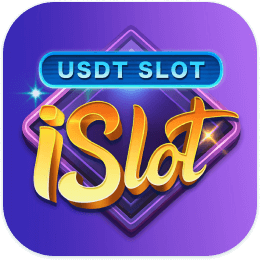ASCVD Risk Estimator +
Continue usual care at MD’s discretion.
- BP:
- LDL-C:
- Diabetes:
- Smoking:
- Aspirin:
Lifestyle: The most important way to prevent ASCVD is to promote a healthy lifestyle throughout life. Medications to reduce ASCVD risk should only be considered part of a shared decision-making process for optimal treatment when a patient’s risk is sufficiently high. Decisions around the therapies listed above are assumed to be made in the context of ACC/AHA guideline-recommended lifestyle interventions.
T1 15.3 % Stop Smoking, Add Statin Treatments
T2 15.3 % Stop Smoking, Add Statin Treatments
T3 15.3 % Stop Smoking, Add Statin Treatments
Email Advice Print with Complete Treatment AdvicePrint Expand All
LDL-C Management (for this Patient)
Consider whether BP-lowering or LDL-C lowering, or both, is best approach.
×Link to Full ACC/AHA Cholesterol GuidelineLink to Full ACC/AHA CV Risk Guideline
Blood Pressure Management (for this Patient)
Tobacco Cessation (for this Patient)
Diabetes Mellitus Management (General)
Lifestyle Recommendations (General)
Nutrition and Diet- To reduce ASCVD risk in all patients:
- A diet emphasizing intake of vegetables, fruits, legumes, nuts, whole grains, and fish is recommended (I, B-R). A diet containing reduced amounts of cholesterol and sodium can be beneficial (IIa, B-NR).
- Replacement of saturated fat with dietary mono- and poly-unsaturated fats can be beneficial (IIa, B-NR).
- Minimizing the intake of trans fats, processed meats, refined carbohydrates, and sweetened beverages as part of a heart healthy diet is reasonable (IIa, B-NR).
For adults with type 2 diabetes mellitus:
- A tailored nutrition plan focusing on a heart-healthy dietary pattern is recommended to improve glycemic control, achieve weight loss (if needed), and improve other ASCVD risk factors (I, A).
Exercise and Physical Activity- To reduce ASCVD risk, adults should:
- Be routinely counseled to optimize a physically active lifestyle (I, B-R).
- Engage in at least 150 minutes per week of accumulated moderate intensity or 75 minutes per week of vigorous intensity aerobic physical activity (or an equivalent combination of moderate and vigorous activity) (I, B-NR). This includes adults with type 2 diabetes mellitus (I, A).
- Decrease sedentary behavior (IIb, C-LD).
For adults unable to meet the minimum physical activity recommendations:
- Engaging in some moderate or vigorous intensity physical activity, even if less than this recommended amount, can be beneficial to reduce ASCVD risk (IIa, B-NR). | Intensity | METS | Examples |
|—|—|—|
| Sedentary Behavior* | 1-1.5 | Sitting, reclining, or lying; watching TV |
| Light | 1.6-2.9 | Walking slowly, cooking, light house work |
| Moderate | 3.0-5.9 | Brisk walking (2.4-4mph), biking 5-9mph, ballroom dancing, active yoga, recreational swimming |
| Vigorous | ≥6 | Jogging/running, biking ≥10mph, singles tennis, swimming laps |
*Sedentary behavior is defined as any waking behavior characterized by an energy expenditure ≤1.5 metabolic equivalents (METs), while in a sitting, reclining, or lying posture. Standing is a sedentary activity in that it involves ≤1.5 METs, but is not considered a component of sedentary behavior; mph indicates miles per hour
Obesity and Being Overweight- In overweight and obese adults:
- Weight loss is recommended to improve the ASCVD risk-factor profile (I, B-R).
- Counseling and comprehensive lifestyle interventions, including calorie restriction, are recommended for achieving and maintaining weight loss (I, B-R).
- Calculating body mass index is recommended annually or more frequently to identify overweight and obese adults for weight loss considerations (I, C-EO).
- It is reasonable to measure waist circumference to identify those at higher cardiometabolic risk (IIa, B-NR).
Aspirin Use Recommendations (for this Patient)
Immunization Practice (General)
CDC’s Standards for Adult Immunization Practice
- ASSESS the immunization status of all your patients at every clinical encounter.
- Strongly RECOMMEND vaccines that your patients need.
- ADMINISTER needed vaccines or REFER your patients to a vaccination provider.
- DOCUMENT vaccines received by your patients.
Immunization Practice (for this Patient)
Supporting Guideline Recommendation
The pneumococcal vaccine is recommended for patients 65 years of age and older and in high-risk patients with cardiovascular disease. (1, B).
CDC’s Recommendation for Patients 65 and older
There are three flu vaccines that are preferentially recommended for people 65 years and older. These are Fluzone High-Dose Quadrivalent vaccine, Flublok Quadrivalent recombinant flu vaccine and Fluad Quadrivalent adjuvanted flu vaccine. This recommendation was based on a review of available studies which suggests that, in this age group, these vaccines are potentially more effective than standard dose unadjuvanted flu vaccines.
CDC’s Standards for Adult Immunization Practice
- ASSESS the immunization status of all your patients at every clinical encounter.
- Strongly RECOMMEND vaccines that your patients need.
- ADMINISTER needed vaccines or REFER your patients to a vaccination provider.
- DOCUMENT vaccines received by your patients.
Therapy Safety Information (General)
See Resource Section of this app for full prescribing information.
- Statins: There is moderate quality evidence that statins do not increase the overall risk of adverse events, but that they may increase the risk of diagnosis of type 2 diabetes in certain individuals.
- Blood Pressure-Lowering Therapies: Adverse effects of blood-pressure-lowering therapies are generally poorly reported, and vary by drug class.
- Tobacco Cessation: Adverse effects of tobacco cessation therapies are generally poorly reported, and vary by drug.
- Aspirin: There is high-quality evidence indicating that aspirin may increase the risk of major bleeding. A calculator for considering major bleeding risks and potential benefits of aspirin therapy for MI and stroke prevention is available here.
Consider whether BP-lowering or LDL-C lowering, or both, is best approach.
×Link to Full ACC/AHA Cholesterol GuidelineLink to Full ACC/AHA CV Risk Guideline
Nutrition and Diet- To reduce ASCVD risk in all patients:
- A diet emphasizing intake of vegetables, fruits, legumes, nuts, whole grains, and fish is recommended (I, B-R). A diet containing reduced amounts of cholesterol and sodium can be beneficial (IIa, B-NR).
- Replacement of saturated fat with dietary mono- and poly-unsaturated fats can be beneficial (IIa, B-NR).
- Minimizing the intake of trans fats, processed meats, refined carbohydrates, and sweetened beverages as part of a heart healthy diet is reasonable (IIa, B-NR).
For adults with type 2 diabetes mellitus:
- A tailored nutrition plan focusing on a heart-healthy dietary pattern is recommended to improve glycemic control, achieve weight loss (if needed), and improve other ASCVD risk factors (I, A).
Exercise and Physical Activity- To reduce ASCVD risk, adults should:
- Be routinely counseled to optimize a physically active lifestyle (I, B-R).
- Engage in at least 150 minutes per week of accumulated moderate intensity or 75 minutes per week of vigorous intensity aerobic physical activity (or an equivalent combination of moderate and vigorous activity) (I, B-NR). This includes adults with type 2 diabetes mellitus (I, A).
- Decrease sedentary behavior (IIb, C-LD).
For adults unable to meet the minimum physical activity recommendations:
- Engaging in some moderate or vigorous intensity physical activity, even if less than this recommended amount, can be beneficial to reduce ASCVD risk (IIa, B-NR). | Intensity | METS | Examples |
|—|—|—|
| Sedentary Behavior* | 1-1.5 | Sitting, reclining, or lying; watching TV |
| Light | 1.6-2.9 | Walking slowly, cooking, light house work |
| Moderate | 3.0-5.9 | Brisk walking (2.4-4mph), biking 5-9mph, ballroom dancing, active yoga, recreational swimming |
| Vigorous | ≥6 | Jogging/running, biking ≥10mph, singles tennis, swimming laps |
*Sedentary behavior is defined as any waking behavior characterized by an energy expenditure ≤1.5 metabolic equivalents (METs), while in a sitting, reclining, or lying posture. Standing is a sedentary activity in that it involves ≤1.5 METs, but is not considered a component of sedentary behavior; mph indicates miles per hour
Obesity and Being Overweight- In overweight and obese adults:
- Weight loss is recommended to improve the ASCVD risk-factor profile (I, B-R).
- Counseling and comprehensive lifestyle interventions, including calorie restriction, are recommended for achieving and maintaining weight loss (I, B-R).
- Calculating body mass index is recommended annually or more frequently to identify overweight and obese adults for weight loss considerations (I, C-EO).
- It is reasonable to measure waist circumference to identify those at higher cardiometabolic risk (IIa, B-NR).
To reduce ASCVD risk in all patients:
- A diet emphasizing intake of vegetables, fruits, legumes, nuts, whole grains, and fish is recommended (I, B-R). A diet containing reduced amounts of cholesterol and sodium can be beneficial (IIa, B-NR).
- Replacement of saturated fat with dietary mono- and poly-unsaturated fats can be beneficial (IIa, B-NR).
- Minimizing the intake of trans fats, processed meats, refined carbohydrates, and sweetened beverages as part of a heart healthy diet is reasonable (IIa, B-NR).
For adults with type 2 diabetes mellitus:
- A tailored nutrition plan focusing on a heart-healthy dietary pattern is recommended to improve glycemic control, achieve weight loss (if needed), and improve other ASCVD risk factors (I, A).
Exercise and Physical Activity - To reduce ASCVD risk, adults should:
- Be routinely counseled to optimize a physically active lifestyle (I, B-R).
- Engage in at least 150 minutes per week of accumulated moderate intensity or 75 minutes per week of vigorous intensity aerobic physical activity (or an equivalent combination of moderate and vigorous activity) (I, B-NR). This includes adults with type 2 diabetes mellitus (I, A).
- Decrease sedentary behavior (IIb, C-LD).
For adults unable to meet the minimum physical activity recommendations:
- Engaging in some moderate or vigorous intensity physical activity, even if less than this recommended amount, can be beneficial to reduce ASCVD risk (IIa, B-NR). | Intensity | METS | Examples |
|—|—|—|
| Sedentary Behavior* | 1-1.5 | Sitting, reclining, or lying; watching TV |
| Light | 1.6-2.9 | Walking slowly, cooking, light house work |
| Moderate | 3.0-5.9 | Brisk walking (2.4-4mph), biking 5-9mph, ballroom dancing, active yoga, recreational swimming |
| Vigorous | ≥6 | Jogging/running, biking ≥10mph, singles tennis, swimming laps |
*Sedentary behavior is defined as any waking behavior characterized by an energy expenditure ≤1.5 metabolic equivalents (METs), while in a sitting, reclining, or lying posture. Standing is a sedentary activity in that it involves ≤1.5 METs, but is not considered a component of sedentary behavior; mph indicates miles per hour
Obesity and Being Overweight - In overweight and obese adults:
- Weight loss is recommended to improve the ASCVD risk-factor profile (I, B-R).
- Counseling and comprehensive lifestyle interventions, including calorie restriction, are recommended for achieving and maintaining weight loss (I, B-R).
- Calculating body mass index is recommended annually or more frequently to identify overweight and obese adults for weight loss considerations (I, C-EO).
- It is reasonable to measure waist circumference to identify those at higher cardiometabolic risk (IIa, B-NR).
CDC’s Standards for Adult Immunization Practice
- ASSESS the immunization status of all your patients at every clinical encounter.
- Strongly RECOMMEND vaccines that your patients need.
- ADMINISTER needed vaccines or REFER your patients to a vaccination provider.
- DOCUMENT vaccines received by your patients.
- ASSESS the immunization status of all your patients at every clinical encounter.
- Strongly RECOMMEND vaccines that your patients need.
- ADMINISTER needed vaccines or REFER your patients to a vaccination provider.
- DOCUMENT vaccines received by your patients.
Supporting Guideline Recommendation
The pneumococcal vaccine is recommended for patients 65 years of age and older and in high-risk patients with cardiovascular disease. (1, B).
CDC’s Recommendation for Patients 65 and older
There are three flu vaccines that are preferentially recommended for people 65 years and older. These are Fluzone High-Dose Quadrivalent vaccine, Flublok Quadrivalent recombinant flu vaccine and Fluad Quadrivalent adjuvanted flu vaccine. This recommendation was based on a review of available studies which suggests that, in this age group, these vaccines are potentially more effective than standard dose unadjuvanted flu vaccines.
CDC’s Standards for Adult Immunization Practice
- ASSESS the immunization status of all your patients at every clinical encounter.
- Strongly RECOMMEND vaccines that your patients need.
- ADMINISTER needed vaccines or REFER your patients to a vaccination provider.
- DOCUMENT vaccines received by your patients.
The pneumococcal vaccine is recommended for patients 65 years of age and older and in high-risk patients with cardiovascular disease. (1, B).
CDC’s Recommendation for Patients 65 and older
There are three flu vaccines that are preferentially recommended for people 65 years and older. These are Fluzone High-Dose Quadrivalent vaccine, Flublok Quadrivalent recombinant flu vaccine and Fluad Quadrivalent adjuvanted flu vaccine. This recommendation was based on a review of available studies which suggests that, in this age group, these vaccines are potentially more effective than standard dose unadjuvanted flu vaccines.
CDC’s Standards for Adult Immunization Practice
- ASSESS the immunization status of all your patients at every clinical encounter.
- Strongly RECOMMEND vaccines that your patients need.
- ADMINISTER needed vaccines or REFER your patients to a vaccination provider.
- DOCUMENT vaccines received by your patients.
See Resource Section of this app for full prescribing information.
Statins: There is moderate quality evidence that statins do not increase the overall risk of adverse events, but that they may increase the risk of diagnosis of type 2 diabetes in certain individuals.
Blood Pressure-Lowering Therapies: Adverse effects of blood-pressure-lowering therapies are generally poorly reported, and vary by drug class.
Tobacco Cessation: Adverse effects of tobacco cessation therapies are generally poorly reported, and vary by drug.
Aspirin: There is high-quality evidence indicating that aspirin may increase the risk of major bleeding. A calculator for considering major bleeding risks and potential benefits of aspirin therapy for MI and stroke prevention is available here.
Sex: Female
Race: White
Values Previous Current Current Age: Total Cholesterol (mg/dL)(mmol/L) 240 HDL Cholesterol (mg/dL)(mmol/L) LDL Cholesterol (mg/dL)(mmol/L) Systolic Blood Pressure (mm Hg) 98 140 Diastolic Blood Pressure (mm Hg) 98 140 Diabetes: Smoker: Treatment for Hypertension: Yes Aspirin Therapy: Statin: Das SR, Everett BM, Birtcher KK, Brown JM, Januzzi Jr JL, Kalyani RR, Kosiborod M, Magwire ML, Neumiller JJ, Morris PB, Sperling LS.
2020 Expert consensus decision pathway on novel therapies for cardiovascular risk reduction in patients with type 2 diabetes: a report of the American College of Cardiology Solution Set Oversight Committee. J Am Coll Cardiol 2020; DOI:10.1016/j.jacc.2020.05.037
Arnett DK, Blumenthal RS, Albert MA, Buroker AB, Goldberger ZD, Hahn EJ, Himmelfarb CD, Khera A, Lloyd-Jones D, McEvoy JW, Michos ED, Miedema MD, Muñoz D, Smith SC Jr, Virani SS, Williams KA Sr, Yeboah J, Ziaeian B. 2019 ACC/AHA Guideline on the Primary Prevention of Cardiovascular Disease: A Report of the American College of Cardiology/American Heart Association Task Force on Clinical Practice Guidelines. J Am Coll Cardiol 2019;74:e177-232.
Grundy SM, Stone NJ, Bailey AL, Beam C, Birtcher KK, Blumenthal RS, Braun LT, de Ferranti S, Faiella-Tommasino J, Forman DE, Goldberg R, Heidenreich PA, Hlatky MA, Jones DW, Lloyd-Jones D, Lopez-Pajares N, Ndumele CE, Orringer CE, Peralta CA, Saseen JJ, Smith SC, Sperling L, Virani SS, Yeboah J. 2018 ACC/AHA/AACVPR/AAPA/ABC/ACPM/ADA/AGS/APhA/ASPC/NLA/PCNA guideline on the management of blood cholesterol: a report of the American College of Cardiology Foundation/American Heart Association Task Force on Clinical Practice Guidelines. J Am Coll Cardiol. 2018; xx:xxxx-xxxx.
Goff DC Jr, Lloyd-Jones DM, Bennett G, Coady S, D’Agostino RB Sr, Gibbons R, Greenland P, Lackland DT, Levy D, O’Donnell CJ, Robinson JG, Schwartz JS, Shero ST, Smith SC Jr, Sorlie P, Stone NJ, Wilson PWF. 2013 ACC/AHA guideline on the assessment of cardiovascular risk: a report of the American College of Cardiology/American Heart Association Task Force on Practice Guidelines. J Am Coll Cardiol 2014;63:2935-59.
Lloyd-Jones DM, Huffman MD, Karmali KN, Sanghavi DM, Wright JS, Pelser C, Gulati M, Masoudi FA, Goff Jr. DC, Estimating Longitudinal Risks and Benefits From Cardiovascular Preventive Therapies Among Medicare Patients: The Million Hearts Longitudinal ASCVD Risk Assessment Tool, Journal of the American College of Cardiology (2016), doi: 10.1016/ j.jacc.2016.10.018.
Whelton PK, Carey RM, Aronow WS, et al. 2017 ACC/AHA/AAPA/ABC/ACPM/AGS/APhA/ASH/ASPC/NMA/PCNA Guideline for the Prevention, Detection, Evaluation, and Management of High Blood Pressure in Adults. J Am Coll Cardiol. 2017; DOI:10.1016/j.jacc.2017.11.006
Lloyd-Jones D.M., Leip E.P., Larson M.G., et al. (2006) Prediction of lifetime risk for cardiovascular disease by risk factor burden at 50 years of age. Circulation 113:791-798
Amsterdam E, Wenger N, Brindis R, et al. 2014 AHA/ACC Guideline for the Management of Patients With Non-ST-Elevation Acute Coronary Syndromes. J Am Coll Cardiol. 2014 Dec, 64 (24) e139-e228.
Das SR, Everett BM, Birtcher KK, Brown JM, Januzzi Jr JL, Kalyani RR, Kosiborod M, Magwire ML, Neumiller JJ, Morris PB, Sperling LS.
2020 Expert consensus decision pathway on novel therapies for cardiovascular risk reduction in patients with type 2 diabetes: a report of the American College of Cardiology Solution Set Oversight Committee. J Am Coll Cardiol 2020; DOI:10.1016/j.jacc.2020.05.037
Arnett DK, Blumenthal RS, Albert MA, Buroker AB, Goldberger ZD, Hahn EJ, Himmelfarb CD, Khera A, Lloyd-Jones D, McEvoy JW, Michos ED, Miedema MD, Muñoz D, Smith SC Jr, Virani SS, Williams KA Sr, Yeboah J, Ziaeian B. 2019 ACC/AHA Guideline on the Primary Prevention of Cardiovascular Disease: A Report of the American College of Cardiology/American Heart Association Task Force on Clinical Practice Guidelines. J Am Coll Cardiol 2019;74:e177–232.
Grundy SM, Stone NJ, Bailey AL, Beam C, Birtcher KK, Blumenthal RS, Braun LT, de Ferranti S, Faiella-Tommasino J, Forman DE, Goldberg R, Heidenreich PA, Hlatky MA, Jones DW, Lloyd-Jones D, Lopez-Pajares N, Ndumele CE, Orringer CE, Peralta CA, Saseen JJ, Smith SC, Sperling L, Virani SS, Yeboah J. 2018 ACC/AHA/AACVPR/AAPA/ABC/ACPM/ADA/AGS/APhA/ASPC/NLA/PCNA guideline on the management of blood cholesterol: a report of the American College of Cardiology Foundation/American Heart Association Task Force on Clinical Practice Guidelines. J Am Coll Cardiol. 2018; xx:xxxx-xxxx.
Goff DC Jr, Lloyd-Jones DM, Bennett G, Coady S, D’Agostino RB Sr, Gibbons R, Greenland P, Lackland DT, Levy D, O’Donnell CJ, Robinson JG, Schwartz JS, Shero ST, Smith SC Jr, Sorlie P, Stone NJ, Wilson PWF. 2013 ACC/AHA guideline on the assessment of cardiovascular risk: a report of the American College of Cardiology/American Heart Association Task Force on Practice Guidelines. J Am Coll Cardiol 2014;63:2935–59.
Lloyd-Jones DM, Huffman MD, Karmali KN, Sanghavi DM, Wright JS, Pelser C, Gulati M, Masoudi FA, Goff Jr. DC, Estimating Longitudinal Risks and Benefits From Cardiovascular Preventive Therapies Among Medicare Patients: The Million Hearts Longitudinal ASCVD Risk Assessment Tool, Journal of the American College of Cardiology (2016), doi: 10.1016/ j.jacc.2016.10.018.
Whelton PK, Carey RM, Aronow WS, et al. 2017 ACC/AHA/AAPA/ABC/ACPM/AGS/APhA/ASH/ASPC/NMA/PCNA Guideline for the Prevention, Detection, Evaluation, and Management of High Blood Pressure in Adults. J Am Coll Cardiol. 2017; DOI:10.1016/j.jacc.2017.11.006
Lloyd-Jones D.M., Leip E.P., Larson M.G., et al. (2006) Prediction of lifetime risk for cardiovascular disease by risk factor burden at 50 years of age. Circulation 113:791–798
Amsterdam E, Wenger N, Brindis R, et al. 2014 AHA/ACC Guideline for the Management of Patients With Non-ST-Elevation Acute Coronary Syndromes. J Am Coll Cardiol. 2014 Dec, 64 (24) e139-e228.
Patient Resources
References
Albert MA, Buroker AB, Dennison-Himmelfarb C, Goldberger ZD, Hahn EJ, Khera A, Lloyd-Jones D, McEvoy JW, Michos ED, Miedema MD, Munoz D, Smith SC, Virani SS, Williams KA, Yeboah J, Ziaeian B. 2019 ACC/AHA Guideline on the Prevention of Cardiovascular Disease: A Report of the American College of Cardiology and American Heart Association Task Force on Clinical Practice Guidelines. J Am Coll Cardiol. In Press.
Grundy SM, Stone NJ, Bailey AL, Beam C, Birtcher KK, Blumenthal RS, Braun LT, de Ferranti S, Faiella-Tommasino J, Forman DE, Goldberg R, Heidenreich PA, Hlatky MA, Jones DW, Lloyd-Jones D, Lopez-Pajares N, Ndumele CE, Orringer CE, Peralta CA, Saseen JJ, Smith SC, Sperling L, Virani SS, Yeboah J. 2018 ACC/AHA/AACVPR/AAPA/ABC/ACPM/ADA/AGS/APhA/ASPC/NLA/PCNA guideline on the management of blood cholesterol: a report of the American College of Cardiology Foundation/American Heart Association Task Force on Clinical Practice Guidelines. J Am Coll Cardiol. 2018; xx:xxxx-xxxx.
Goff DC Jr, Lloyd-Jones DM, Bennett G, Coady S, D’Agostino RB Sr, Gibbons R, Greenland P, Lackland DT, Levy D, O’Donnell CJ, Robinson JG, Schwartz JS, Shero ST, Smith SC Jr, Sorlie P, Stone NJ, Wilson PWF. 2013 ACC/AHA guideline on the assessment of cardiovascular risk: a report of the American College of Cardiology/American Heart Association Task Force on Practice Guidelines. J Am Coll Cardiol 2014;63:2935–59.
Lloyd-Jones DM, Huffman MD, Karmali KN, Sanghavi DM, Wright JS, Pelser C, Gulati M, Masoudi FA, Goff Jr. DC, Estimating Longitudinal Risks and Benefits From Cardiovascular Preventive Therapies Among Medicare Patients: The Million Hearts Longitudinal ASCVD Risk Assessment Tool, Journal of the American College of Cardiology (2016), doi: 10.1016/ j.jacc.2016.10.018.
Whelton PK, Carey RM, Aronow WS, et al. 2017 ACC/AHA/AAPA/ABC/ACPM/AGS/APhA/ASH/ASPC/NMA/PCNA Guideline for the Prevention, Detection, Evaluation, and Management of High Blood Pressure in Adults. J Am Coll Cardiol. 2017; DOI:10.1016/j.jacc.2017.11.006
Albert MA, Buroker AB, Dennison-Himmelfarb C, Goldberger ZD, Hahn EJ, Khera A, Lloyd-Jones D, McEvoy JW, Michos ED, Miedema MD, Munoz D, Smith SC, Virani SS, Williams KA, Yeboah J, Ziaeian B. 2019 ACC/AHA Guideline on the Prevention of Cardiovascular Disease: A Report of the American College of Cardiology and American Heart Association Task Force on Clinical Practice Guidelines. J Am Coll Cardiol. In Press.
Grundy SM, Stone NJ, Bailey AL, Beam C, Birtcher KK, Blumenthal RS, Braun LT, de Ferranti S, Faiella-Tommasino J, Forman DE, Goldberg R, Heidenreich PA, Hlatky MA, Jones DW, Lloyd-Jones D, Lopez-Pajares N, Ndumele CE, Orringer CE, Peralta CA, Saseen JJ, Smith SC, Sperling L, Virani SS, Yeboah J. 2018 ACC/AHA/AACVPR/AAPA/ABC/ACPM/ADA/AGS/APhA/ASPC/NLA/PCNA guideline on the management of blood cholesterol: a report of the American College of Cardiology Foundation/American Heart Association Task Force on Clinical Practice Guidelines. J Am Coll Cardiol. 2018; xx:xxxx-xxxx.
Goff DC Jr, Lloyd-Jones DM, Bennett G, Coady S, D’Agostino RB Sr, Gibbons R, Greenland P, Lackland DT, Levy D, O’Donnell CJ, Robinson JG, Schwartz JS, Shero ST, Smith SC Jr, Sorlie P, Stone NJ, Wilson PWF. 2013 ACC/AHA guideline on the assessment of cardiovascular risk: a report of the American College of Cardiology/American Heart Association Task Force on Practice Guidelines. J Am Coll Cardiol 2014;63:2935–59.
Lloyd-Jones DM, Huffman MD, Karmali KN, Sanghavi DM, Wright JS, Pelser C, Gulati M, Masoudi FA, Goff Jr. DC, Estimating Longitudinal Risks and Benefits From Cardiovascular Preventive Therapies Among Medicare Patients: The Million Hearts Longitudinal ASCVD Risk Assessment Tool, Journal of the American College of Cardiology (2016), doi: 10.1016/ j.jacc.2016.10.018.
Whelton PK, Carey RM, Aronow WS, et al. 2017 ACC/AHA/AAPA/ABC/ACPM/AGS/APhA/ASH/ASPC/NMA/PCNA Guideline for the Prevention, Detection, Evaluation, and Management of High Blood Pressure in Adults. J Am Coll Cardiol. 2017; DOI:10.1016/j.jacc.2017.11.006
The “2013 ACC/AHA Guideline on the Assessment of Cardiovascular Risk” provides clear recommendations for estimating cardiovascular disease risk. Risk assessments are extremely useful when it comes to reducing risk for cardiovascular disease because they help determine whether a patient is at high risk for cardiovascular disease, and if so, what can be done to address any cardiovascular risk factors a patient may have. Here are the highlights of the guideline:
- Risk assessments are used to determine the likelihood of a patient developing cardiovascular disease, heart attack or stroke in the future. In general, patients at higher risk for cardiovascular disease require more intensive treatment to help prevent the development of cardiovascular disease.
- Risk assessments are calculated using a number of factors including age, gender, race, cholesterol and blood pressure levels, diabetes and smoking status, and the use of blood pressure-lowering medications. Typically, these factors are used to estimate a patient’s risk of developing cardiovascular disease in the next 10 years. For example, someone who is young with no risk factors for cardiovascular disease would have a very low 10-year risk for developing cardiovascular disease. However, someone who is older with risk factors like diabetes and high blood pressure will have a much higher risk of developing cardiovascular disease in the next 10 years.
- If a preventive treatment plan is unclear based on the calculation of risk outlined above, care providers should take into account other factors such as family history and level of C-reactive protein. Taking this additional information into account should help inform a treatment plan to reduce a patient’s 10-year risk of developing cardiovascular disease.
- Calculating the 10-year risk for cardiovascular disease using traditional risk factors is recommended every 4-6 years in patients 20-79 years old who are free from cardiovascular disease. However, conducting a more detailed 10-year risk assessment every 4-6 years is reasonable in adults ages 40-79 who are free of cardiovascular disease. Assessing a patient’s 30-year risk of developing cardiovascular disease can also be useful for patients 20-59 years of age who are free of cardiovascular disease and are not at high short-term risk for cardiovascular disease.
- Risk estimations vary drastically by gender and race. Patients with the same traditional risk factors for cardiovascular disease such as high blood pressure can have a different 10-year risk for cardiovascular disease as a result of their sex and race.
- After care providers and patients work together to conduct a risk assessment, it’s important that they discuss the implications of their findings. Together, patients and their care providers should weigh the risks and benefits of various treatments and lifestyle changes to help reduce the risk of developing cardiovascular disease.
Source: www.cardiosmart.org
The “2013 AHA/ACC Guideline on Lifestyle Management to Reduce Cardiovascular Risk” provides recommendations for heart-healthy lifestyle choices based on the latest research and evidence. The guidelines focus on two important lifestyle choices–diet and physical activity–which can have a drastic impact on cardiovascular health. Here’s what every patient should know about the latest recommendations for reducing cardiovascular disease risk through diet and exercise.
Diet
- Diet is a vital tool for lowering cholesterol and blood pressure levels, which are two major risk factors for cardiovascular disease.
- Patients with high cholesterol and high blood pressure levels should eat plenty of vegetables, fruits and whole grains and incorporate low-fat dairy products, poultry, fish, legumes, non-tropical vegetable oils and nuts into their diet. They should also limit intake of sweets, sugar-sweetened beverages and red meats.
- There are many helpful strategies for heart-healthy eating, including the DASH diet and the USDA’s Choose My Plate.
- Patients who need to lower their cholesterol should reduce saturated and trans fat intake. Ideally, only 5-6% of daily caloric intake should come from saturated fat.
- Patients with high blood pressure should consume no more than 2,400 mg of sodium a day, ideally reducing sodium intake to 1,500 mg a day. However, even reducing sodium intake in one’s current diet by 1,000 mg each day can help lower blood pressure.
- It’s important to adapt the recommendations above, keeping in mind calorie requirements, as well as, personal and cultural food preferences. Nutrition therapy for other conditions like diabetes should also be considered. Doing so helps create healthy eating patterns that are realistic and sustainable.
Physical Activity
- Regular physical activity helps lower cholesterol and blood pressure, reducing the risk for cardiovascular disease.
- In general, adults should engage in aerobic physical activity 3-4 times a week with each session lasting an average of 40 minutes.
- Moderate (brisk walking or jogging) to vigorous (running or biking) physical activity is recommended to reduce cholesterol levels.
Source: www.cardiosmart.org
The “2013 AHA/ACC/TOS Guideline for the Management of Overweight and Obesity in Adults” was created to reflect the latest research to outline best practices when it comes to treating obesity–a condition that affects more than one-third of American adults. These guidelines help address questions like “What’s the best way to lose weight?” and “When is bariatric surgery appropriate?”. Here is what every patient should know about the treatment of overweight and obesity:
- Definition of obesity: Obesity is a medical condition in which excess body fat has accumulated to the extent that it can have an adverse effect on one’s health. Obesity can be diagnosed using body mass index (BMI), a measurement of height and weight, as well as waist circumference. Obesity is categorized as having a BMI of 30 or greater. Abdominal obesity is defined as having a waist circumference greater than 40 inches for a man or 35 inches for a woman.
- Benefits of weight loss: Obesity increases the risk for serious conditions such as cardiovascular disease, diabetes and death, but losing just a little bit of weight can result in significant health benefits. For an adult who is obese, losing just 3-5% of body weight can improve blood pressure and cholesterol levels and reduce the risk for cardiovascular disease and diabetes. Ideally, care providers recommend 5-10% weight loss for obese adults, which can produce even greater health benefits.
- Weight loss strategies: There is no single diet or weight loss program that works best for all patients. In general, reduced caloric intake and a comprehensive lifestyle intervention involving physical activity and behavior modification tailored according to a patient’s preferences and health status is most successful for sustained weight loss. Further, weight loss interventions should include frequent visits with health care providers and last more than one year for sustained weight loss.
- Bariatric Surgery: Bariatric surgery may be a good option for severely obese patients to reduce their risk of health complications and improve overall health. However, bariatric surgery should be reserved for only the highest risk patients until more evidence is available on this issue. Present guidelines advise that weight loss surgery is only recommended for patients with extreme obesity (BMI ≥40) or in patients that have a BMI ≥35 in addition to a chronic health condition.
Source: www.cardiosmart.org
The American College of Cardiology (ACC) and the American Heart Association (AHA) recently developed new standards for treating blood cholesterol. These recommendations are based on a thorough and careful review of the very latest, highest quality clinical trial research. They help care providers deliver the best care possible. This page provides some of the highlights from the new practice guidelines. The ultimate goal of the new cholesterol practice guidelines is to reduce a person’s risk of heart attack, stroke and death. For this reason, the focus is not just on measuring and treating cholesterol, but identifying whether someone already has or is at risk for atherosclerotic cardiovascular disease (ASCVD) and could benefit from treatment.
What is ASCVD?
Heart attack and stroke are usually caused by atherosclerotic cardiovascular disease (ASCVD). ASCVD develops because of a build-up of sticky cholesterol-rich plaque. Over time, this plaque can harden and narrow the arteries.
These practice guidelines outline the most effective treatments that lower blood cholesterol in those individuals most likely to benefit. Most importantly, they were selected as the best strategies to lower cholesterol to help reduce future heart attack or stroke risk. Share this information with your health care provider so that you can ask questions and work together to decide what is right for you.
Key Points
Based on the most up-to-date and complete look at available clinical trial results:
- Health care providers should focus on identifying those people who are most likely to have a heart attack or stroke and make sure they are given effective treatment to reduce their risk.
- Cholesterol should be considered along with other factors known to make a heart attack or stroke more likely.
- Knowing your risk of heart attack and stroke can help you and your health care provider decide whether you may need to take a medication—most likely a statin—to lower that risk.
- If a medication is needed, statins are recommended as the first choice to lower heart attack and stroke risk among certain higher-risk patients based on an overwhelming amount of evidence. For those unable to take a statin, there are other cholesterol-lowering drugs; however, there is less research to support their use.
Evaluating Your Risk
Your health care provider will first want to assess your risk of ASCVD (assuming you don’t already have it). This information will help determine if you are at high enough risk of a heart attack or stroke to need treatment.
To do this, your care provider will 1) review your medical history and 2) gauge your overall risk for heart attack or stroke. He/she will likely want to know:
- whether you have had a heart attack, stroke or blockages in the arteries of your heart, neck, or legs.
- your risk factors. In addition to your total cholesterol, LDL cholesterol, and HDL (so-called “good”) cholesterol, your health care provider will consider your age, if you have diabetes, and whether you smoke and/or have high blood pressure.
- about your lifestyle habits, other medical conditions, any previous drug treatments, and if anyone in your family has high cholesterol or suffered a heart attack or stroke at an early age.
A lipid or blood cholesterol panel will be needed as part of this evaluation. This blood test measures the amount of fatty substances (called lipids) in your blood. You may have to fast (not eat for a period of time) before having your blood drawn.
If there is any question about your risk of ASCVD, or whether you might benefit from drug therapy, your care provider may make additional assessments or order additional tests. The results of these tests can help you and your health care team decide what might be the best treatment for you. These tests may include:
- Lifetime risk estimates —how likely you are to have a heart attack and stroke during your lifetime
- Coronary artery calcium (CAC) score —a test that shows the presence of plaque or fatty build-up in the heart artery walls
- High-sensitivity C-Reactive Protein (CRP) —a blood test that measures the amount of CRP, a marker of inflammation or irritation in the body; higher levels have been associated with heart attack and stroke
- Ankle-brachial index (ABI) —the ratio of the blood pressure in the ankle compared to blood pressure in the arm, which can predict peripheral artery disease (PAD)
If you have very high levels of low-density lipoprotein (LDL or “bad”) cholesterol, your care provider may want to find out if you have a genetic or familial form of hypercholesterolemia. This condition can be passed on in families.
Your Treatment Plan
Before coming up with a specific treatment plan, your care provider will talk with you about options for lowering your blood cholesterol and reducing your personal risk of atherosclerotic disease. This will likely include a discussion about heart-healthy living and whether you might benefit from a cholesterol-lowering medication.
Heart-Healthy Lifestyle
Adopting a heart-healthy lifestyle continues to be the first and best way to lower your risk of problems. Doing so can also help control or prevent other risk factors (for example: high blood pressure or diabetes). Experts suggest:
- Eating a diet rich in vegetables, fruits, and whole grains ; this also includes low-fat dairy products, poultry, fish, legumes, and nuts; it limits intake of sweets, sugar-sweetened beverages and red meats.
- Getting regular exercise ; check with your health care provider about how often and how much is right for you.
- Maintaining a healthy weight .
- Not smoking or getting help quitting .
- Staying on top of your health , risk factors and medical appointments. For some people, lifestyle changes alone may not be enough to prevent a heart attack or stroke. In these cases, taking a statin at the right dose will most likely be necessary.
Medications
There are two types of cholesterol-lowering medications: statins and non-statins.
Statin Therapy
There is a large body of evidence that shows the use of a statin provides the greatest benefit and fewest safety issues. In particular, specific groups of patients appear to benefit most from taking moderate or high-intensity statin therapy. Based on this information, your care provider will likely recommend a statin if you have:
- ASCVD
- Very high LDL cholesterol (190 mg/dL or higher)
- Type 2 diabetes and are between 40 and 75 years of age
- Above a certain likelihood of having a heart attack or stroke in the next 10 years (7.5% or higher) and are between 40 and 75 years of age
In certain cases, your care provider may still recommend a statin even if you don’t fit into one of the groups above. He/she will consider your overall health and other factors to help decide if you are at enough risk to benefit from a statin. Based on the guidelines, these may include:
- Family history of premature heart attack or stroke
- Your lifetime risk of ASCVD
- LDL-cholesterol ≥160 mg/dL
- hs-CRP ≥2 mg/L
- Results from other special testing (CAC scoring, ABI)
If you are on a statin, your care provider will need to find the dose that is right for you.
- People who have had a heart attack, stroke or other types of ASCVD tend to benefit the most from taking the highest amount (dose) of statin therapy if they tolerate it. This may be more appropriate than taking multiple drugs to lower cholesterol.
- A more moderate dose of statin may be appropriate for some people with ASCVD, such as those over 75 years or those that might have problems taking the highest dose of a statin (i.e., those with prior organ transplantation).
Sometimes more than one statin needs to be tried before finding the one that works best.
If you are 75 years or older and have not already had a heart attack, stroke or other types of ASCVD, your care provider will discuss whether a statin is right for you.
Other cholesterol-lowering medications
Not all patients will be able to take the optimum dose of statin. After attention to lifestyle changes and statin therapy, non-statin drugs may be considered if you have high-risk with known ASCVD, diabetes, or very high LDL cholesterol values (≥190 mg/dL) and:
Have side effects from statins that prevent you from getting to the optimal dose or are not able to take a statin at all.
Are limited from taking an optimal dose due to other drugs that you are taking, including:
Transplant drug regimens to prevent rejection
Multiple drugs to treat HIV
Some antibiotics like erythromycin and clarithromycin or certain oral anti-fungal drugs
As always, it’s important to talk with your health care provider about which medication is right for you.
What About Having Goals of Treatment?
Although keeping LDL-cholesterol lower with an optimal dose of statin is supported strongly by clinical trials, getting to a specific goal level is not.
Staying on Top of Your Risk
- Take steps to lower your risk factors for heart attack, stroke and other problems —Make healthy choices (eating a healthy diet, getting exercise, maintaining a healthy weight and not smoking). Drug therapy, if needed, can help control risk factors.
- Report side effects —Muscle aches are commonly reported and may or may not be due to the statin. If you are having problems, your care provider needs to know to help manage any side effects and possibly switch you to a different statin.
- Take your medications as directed .
- Get blood cholesterol and other tests that are recommended by your health care team. These can help assess whether statin therapy—and the dose—is working for you.
Questions to Ask
- What are my risk factors for heart attack and stroke? Am I on the best prevention program to minimize this risk?
- Is my cholesterol high enough that it might be due to a genetic condition?
- What lifestyle changes can I make to stay healthy and prevent problems?
- Do I need to be on a statin?
- How do I monitor how I am doing?
- What should I do if I develop muscle aches or weakness after starting the statin?
- What do I do if I have other symptoms after starting the statin?
Source: www.cardiosmart.org
For additional cardiovascular terms visit www.cardiosmart.org
This Terms of Service and License Agreement constitutes a legal agreement (collectively, the “Agreement”) between the American College of Cardiology Foundation (“ACCF”) and You and your agents (“You”) for the use of ASCVD Risk Estimator Plus (the “Product”), whether You use the mobile application version of the Product or the web version of the Product. The Product allows You to access certain content included in the Product (“Content”) relating to calculation of ASCVD Risk and corresponding guideline advice.
By using the Product, You accept and agree to be bound by all of the terms and conditions set forth in this Agreement. If You do not wish to accept the terms and conditions of this Agreement, You may not proceed to use the Product.
ACCF may change the terms of this Agreement from time to time without further notice directly to You. When the terms are changed, ACCF will post a general conspicuous notice. If You do not agree with the revised terms, please discontinue use of the Product immediately. Your continued use of the Product following such notice constitutes your acceptance of and agreement to be bound by any revised terms of the Agreement. This Agreement expressly incorporates by reference and includes rules or disclaimers that may be posted and updated within the Product or communicated to You from time to time.
Term and Termination
ACCF may terminate your access and/or the Product at any time. You agree that any termination of your access to the Product shall not result in any liability or other obligation of ACCF to You, or any third party in connection with such termination.
Intellectual Property Rights
This Product, including the information, text, graphics, images, audio and video files, trademarks and other materials that may be contained therein (collectively “Content”), is owned by ACCF and/or its suppliers and is protected by patents, copyrights, trademarks, and other proprietary rights. Except as specifically provided in this Agreement, your use of the Product shall be governed and constrained by applicable patent, copyright, trademark and other intellectual property laws. ACCF grants You a limited, nonexclusive, nontransferable, revocable license to utilize and access the Product for your noncommercial, personal use according to the terms and conditions in this Agreement. You may not modify, publish, transmit, participate in the transfer or sale of, reproduce, create derivative works from, distribute, perform, display, incorporate into another website, or in any other way exploit the Service and/or any of the Content, in whole or in part. Except as expressly granted by this Agreement, You acquire no right, title or interest in the Product or the Content or other data or materials incorporated in the Product. ACCF, ACC or affiliates or licensors thereof shall retain all right, title and interest in the Product and Content.
Limitation of Liability
TO THE FULLEST EXTENT ALLOWED BY APPLICABLE LAW, ACCF HEREBY DISCLAIMS, AND IN NO EVENT SHALL ACCF OR ANY PARTY INVOLVED IN CREATING OR PRODUCING THE PRODUCT BE LIABLE FOR, ANY DIRECT, INDIRECT, INCIDENTAL, SPECIAL, CONSEQUENTIAL, OR EXEMPLARY DAMAGES, INCLUDING WITHOUT LIMITATION, DAMAGES FOR LOSS OF PROFITS, GOODWILL, USE, DATA LOSS, OR OTHER LOSSES, WHETHER IN AN ACTION OF CONTRACT, NEGLIGENCE OR OTHER TORTIOUS ACTION, EVEN IF ACCF HAS BEEN ADVISED OF THE POSSIBILITY OF SUCH DAMAGES, RESULTING FROM: (i) THE USE OR INABILITY TO USE THE PRODUCT, (ii) THE COST OF ANY SUBSTITUTE PRODUCTS AND/OR SERVICES RESULTING FROM ANY PRODUCTS, DATA, INFORMATION OR SERVICES OBTAINED OR WHICH YOU WERE UNABLE TO OBTAIN OR TRANSACTIONS EFFECTED OR FAILED TO BE EFFECTED, (iii) THE USE OR INABILITY TO USE ANY THIRD PARTY APPLICATIONS CONTAINED WITHIN THE PRODUCT, OR (iv) ANY MATTER OTHERWISE RELATED TO YOUR USE OF THE PRODUCT.
Release of Liability
You assume all risks associated with use of the Product including, but not limited to any harm, injury or damages resulting directly or indirectly from the use of the Product, all such risks being known and understood by You. In consideration of your use of the Product, You, for yourself and anyone entitled to act on your behalf, waive and forever release ACCF, its officers, trustees, employees, representatives and successors from all claims and liabilities of any kind arising out of your use or misuse of the Product.
Indemnification
You hereby agree to indemnify, save and hold ACCF, its directors, officers, shareholders, parents, subsidiaries, affiliates, agents and licensors harmless from and against any and all claims, liability, losses, damages and costs, including, without limitation, reasonable attorneys’ fees and costs, arising out of your use or misuse of the Product or Content, or any violation of this Agreement. ACCF assumes the right, at your expense, to assume the exclusive defense and control of any matter for which you are required to indemnify ACCF, and you agree to cooperate with ACCF’s defense of these claims. ACCF will use reasonable efforts to notify you of any such claim, action, or proceeding upon becoming aware of it.
Disclaimer of Warranties
THE PRODUCT AND CONTENT ARE PROVIDED ON AN “AS IS” AND “AS AVAILABLE” BASIS. ACCF AND ITS SUPPLIERS EXPRESSLY DISCLAIM ALL WARRANTIES OF ANY KIND WITH RESPECT TO THE PRODUCT OR CONTENT, WHETHER EXPRESS OR IMPLIED, INCLUDING IMPLIED WARRANTIES OF MERCHANTABILITY, FITNESS FOR A PARTICULAR PURPOSE, TITLE AND NON-INFRINGEMENT. ACCF MAKES NO WARRANTY THAT THE PRODUCT AND/OR ANY CONTENT THEREIN WILL MEET YOUR REQUIREMENTS, OR WILL BE UNINTERRUPTED, TIMELY, SECURE, CURRENT, ACCURATE, COMPLETE OR ERROR-FREE OR THE RESULTS THAT MAY BE OBTAINED BY USE OF THE PRODUCT OR ANY CONTENT THEREIN WILL BE ACCURATE OR RELIABLE. YOU UNDERSTAND AND ACKNOWLEDGE THAT YOUR SOLE AND EXCLUSIVE REMEDY WITH RESPECT TO ANY DEFECT IN OR DISSATISFACTION WITH THE PRODUCT IS TO CEASE ITS USE.
The Content on the Product is presented as an educational service intended for licensed healthcare professionals. While the Content in the Product is about specific medical and healthcare issues, the Content is not a substitute for or replacement of personalized medical advice and is not intended to be used as the sole basis for making individualized medical or health-related decisions.
The views and opinions expressed are those of the contributing authors and editors and do not necessarily represent the views of the ACCF. The material is not intended to present the only, or necessarily best, methods or procedures for the medical situations addressed, but rather is intended to represent an approach, view, statement or opinion.
Any reference to a specific therapy or commercial product in this Product does not constitute a guarantee or endorsement by ACCF of the quality or value of such therapy or product or any claims made by the manufacturer of such therapy or commercial product.
In addition, any statements about such therapy or commercial products are solely based on published clinical prediction rules and estimates of drug treatment effects from published clinical studies and do not represent an ACCF endorsement or evaluation of these products.
Force Majeure
ACCF will be excused from performance under this Agreement and will not be liable or considered in default under this Agreement in the event that the Product is unavailable for any period of time, or if ACCF is otherwise unable to perform its obligations hereunder, in whole or in part, as a result of a Force Majeure Event. For purposes of this Section, “Force Majeure Event” means an event or series of events caused by or resulting from any of the following: (1) weather conditions or other elements of nature or acts of God; (2) government regulation; (3) quarantines or embargoes; (4) telecommunications, network, computer, server or Internet downtime; (5) unauthorized access to ACCF’s information technology systems by third parties; or (6) any other causes beyond the reasonable control of ACCF.
No Assignment
This Agreement is personal to You, and You may not assign your rights or obligations to anyone.
No Waiver
Neither failure nor delay on the part of any party to exercise any right, remedy, power or privilege hereunder nor course of dealing between the parties shall operate as a waiver thereof, or of the exercise of any other right, remedy, power or privilege. No term of this Agreement shall be deemed waived, and no breach consented to, unless such waiver or consent shall be in writing and signed by the party claimed to have waived or consented. No waiver of any rights or consent to any breaches shall constitute a waiver of any other rights or consent to any other breach.
Severability
If any provision in this Agreement is held invalid or unenforceable under applicable law, the remaining provisions shall continue in full force and effect.
Governing Law
This Agreement will be governed by and construed exclusively in accordance with the laws of the District of Columbia, USA, without regard to its conflicts of law principles and, to the extent applicable, the federal laws of the United States. If a dispute arises between ACCF and You, You hereby agree to submit such dispute to non-binding mediation, followed by binding arbitration, if necessary. Both the mediation and arbitration will be conducted by JAMS applying the laws of the District of Columbia without regard to its conflicts of laws principles and in the District of Columbia as venue.
Certification
I hereby certify that I understand and agree to the terms stated in this Agreement and that this Agreement applies to my initial use of the Product and all other subsequent uses of the Product. BY USING THIS PRODUCT, I HEREBY AFFIRM THAT I HAVE READ, FULLY UNDERSTAND, AND AGREE TO THE ABOVE STATEMENTS.
In addition to an upgrade to the app look and feel, the name “ASCVD Risk Estimator Plus” refers to the fact that this new version combines the original ASCVD Risk Estimator functionality plus the 2016 Million Hearts Longitudinal ASCVD Risk Assessment tool, published in 2016.
ASCVD Risk Estimator Plus maintains the same functionalities as the original ASCVD Risk Estimator (e.g., 10-year risk via the Pooled Cohort equation can be calculated under Initial Visits on the Evaluate screen). However, the app now includes additional capabilities to estimate and track change in risk over time, and forecast potential benefit of specific risk-lowering interventions. (See “Terms and Concepts” in the “Resources” section of this app for more information on how each individual value is calculated.) The ASCVD Risk Estimator Plus has also expanded the guidance provided by including expert advice regarding blood pressure-lowering therapy, aspirin use, and smoking cessation, along with the original statin initiation recommendations.
Lastly, the ASCVD Risk Estimator Plus now allows the option to calculate initial 10-year ASCVD risk for patients who have already initiated a statin, “Initial 10-year ASCVD risk" may be calculated for patients who have already initiated statin therapy because recent evidence suggests a patient’s cholesterol values have the same impact on ASCVD risk regardless of whether current values were achieved with or without the aid of statin therapy.
This version of the application has been locked because of need to ugrade the science. Please go to the store upgrade this application.
Go to store Use to assess degree of nicotine dependence to help guide intensity of treatment.
| How many cigarettes do you smoke? |
|---|
| Answer |
| 10 or fewer |
| 11-20 |
| 21-30 |
| ≥ 31 |
| How soon after waking up do you smoke your first cigarette of the day? |
| Answer |
| After 60 minutes |
| 31-60 minutes |
| 6-30 minutes |
| Within 5 minutes |
| Level of nicotine dependence is computed by adding the scores together |
| Score |
| 0-2 |
| 3-4 |
| 5-6 |
×
FAQ
At riskの使い方は?
![]()
at riskの例文 何千もの家族が、家賃を払えないせいで立ち退きの危機にある。 People who are overweight are at risk of having heart problems. 太りすぎの人たちは心臓に問題を抱える危険性が
英語で「Risk O to do」の意味は?
〖S risk O《to do》〗 主語が目的語を危険にさらす《〜するために》 He risked his life to save her. 彼は彼女を救うために命をかけた。
Are there any secrets in Buckshot Roulette?
![]()
There are some Easter Eggs relating to the General Release of Liability that have been found, more particularly the fact that you cannot enter certain usernames on the waiver upon meeting The Dealer, the main ones being GOD and DEALER.
What is the creature in Buckshot Roulette?
The Dealer is the main antagonist of Buckshot Roulette. The Dealer seems to be a creature far from human as he is seen not needing to use Adrenaline unlike the player.
How to play Buckshot Roulette game?
The music is also nice and gets you in the high stakes mood, with the club beats droning on, putting you in “The Zone” as you risk your life in the game. No cheap jumpscares present or needed for all the tension the atmosphere creates. The DEALER is crazy but fair.
What is the God paper in Buckshot Roulette?
![]()
As you gain items, you come across a general release of liability form covered in blood, signed by God. While not overtly stated in exposition or clearly, the player can assume that God played the game and lost to the Dealer. This seems to be proven correct if you lose the game, and you are sent to heaven.Feb 6, 2024
What are the three types of shotgun shells?
The three most common types available in today’s market are birdshot, buckshot and slugs. Each type serves a distinct purpose, tailored to specific hunting, defensive and sporting needs.Nov 3, 2023
Literally Mindblowing Gameplay. 15 to 20-minute intense playtime. Enter the arena, go three rounds against The Dealer, and walk away with the prize.
This site only collects related articles. Viewing the original, please copy and open the following link:ASCVD Risk Estimator +
















































































































































































